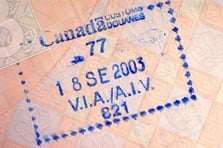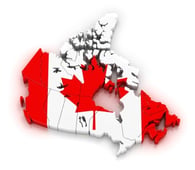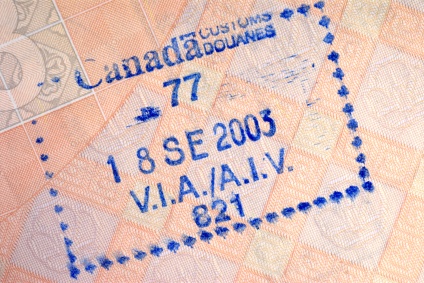David Larock in Mortgages and Finance, Home Buying
If you are a new immigrant to Canada - welcome! As a former world traveller, I know how daunting it can be to get settled in a new country, and if purchasing a new home is high on your list of priorities, today’s post should help familiarize you with what’s involved in securing a Canadian mortgage. You might be surprised to learn that in most cases your recent arrival should not penalize you, and that you can borrow at very competitive market rates. I’ll cover the general guidelines and then summarize the financing options for people in three different situations: people here on work visas and landed immigrants who are employed; non-landed immigrants who are employed; and new immigrants who are not yet working but who have applied for, or been granted, landed immigrant status. I will close by offering some important advice based on my years on the lending side of the mortgage business.
the financing options for people in three different situations: people here on work visas and landed immigrants who are employed; non-landed immigrants who are employed; and new immigrants who are not yet working but who have applied for, or been granted, landed immigrant status. I will close by offering some important advice based on my years on the lending side of the mortgage business.
Unless they have been transferred to Canada as part of a corporate relocation program, new Canadians must be employed for a minimum of three months before they are eligible for a mortgage. This lender rule is designed to ensure that employees have passed the standard three month probationary period with their new employer. Lenders also want to see a history of credit repayment, so if you can provide an international credit report from Equifax or Transunion, or bank references from your country of origin, you will strengthen your mortgage application.
Establishing a Canadian credit history is another important step, and applying for a credit card is a good way to start this process. If you’re having trouble with traditional creditors, consider a secured credit card. These are easier to get and here’s how they work: if you are approved for a $1000 limit on a secured card, you pay the creditor $1000 upfront as security, and after demonstrating a period of successful repayment (which is usually twelve months), you get that money back.
Lenders also recognize that it can initially be difficult to establish Canadian credit, so they will consider credit history from alternative sources, such as a landlord’s letter showing twelve months of on-time payments, or copies of utility bills that show regular payments being made for at least a year. Keep in mind that you are only considered ‘new ’ for thirty-six months after arriving, so any extra flexibility afforded to new immigrants goes away after three years.
’ for thirty-six months after arriving, so any extra flexibility afforded to new immigrants goes away after three years.
People here on work visas and landed immigrants who are employed for a minimum of three months can qualify for up to 95% financing, as long as they have a strong international credit report or can provide proof of twelve months timely payment of two alternative sources of credit (i.e. utilities, cell phone, cable). You can only borrow against your primary residence, but aside from that, for borrowing purposes, you are Canadians.
Non-landed immigrants who are employed for at least three months and who can meet the same credit/alternative credit guidelines can qualify for up to 90% financing. If you’re in this group, you are limited to purchase transactions (no refinances) and to single-unit primary residences. Also, the lender may want to confirm that you have applied for landed status.
New immigrants who do not yet have landed status and are not yet employed can borrow between 65% to 75% of the value of the value of a property, provided that they can provide a strong credi t history. In addition to the larger down payment, borrowers needing 65% financing must show liquid assets equal to six months of mortgage principal, interest and property taxes, and borrowers wanting 75% financing must show additional liquid assets equal to 25% of the property’s purchase price. (These properties must also be primary residences.)
t history. In addition to the larger down payment, borrowers needing 65% financing must show liquid assets equal to six months of mortgage principal, interest and property taxes, and borrowers wanting 75% financing must show additional liquid assets equal to 25% of the property’s purchase price. (These properties must also be primary residences.)
In closing, a word of caution. In my time on the lending side of the mortgage business, I am sorry to say that I saw a small number of new immigrants who were exploited by their mortgage advisor. In the rare cases where this happened, people had placed blind trust in a mortgage advisor, and didn’t bother learning anything about the subject, simply because that advisor was from their same country of origin. In these instances, the advisor secured private financing at exorbitant rates in order to earn higher commissions and extra fees. To avoid this, shop around. Blind trust can be expensive. There is no reason why your first experience with a Canadian mortgage shouldn’t be a good one.

Now that you have some basic guidelines to use when applying for your first Canadian mortgage, you may want to review my posts on other mortgage topics such as pre-approvals, the income tests, tips for first-time home buyers, and what to expect for closing costs, among others. If you have any further questions or would like an assessment of your personal situation, feel free to contact me at any time.
Oh, and I almost forgot. Welcome to the Great White North.
David Larock is an independent mortgage planner and industry insider specializing in helping clients purchase, refinance or renew their mortgages. David's posts appear weekly on this blog (movesmartly.com) and on his own blog (integratedmortgageplanners.com/blog). Email Dave




